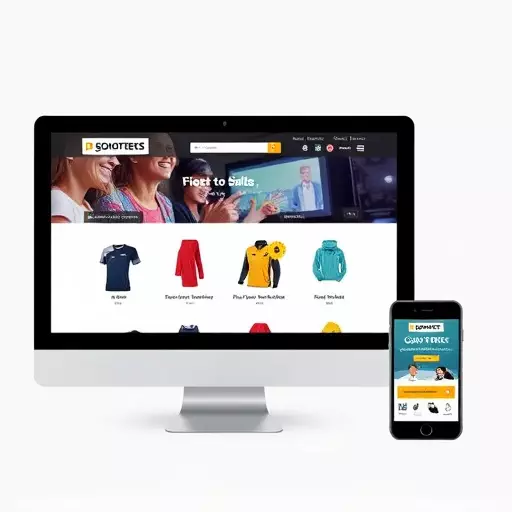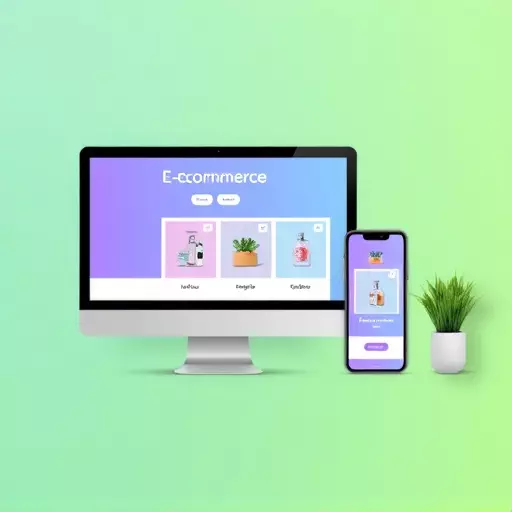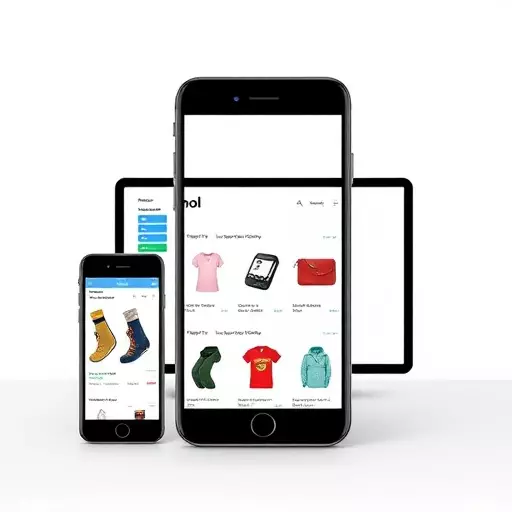In today's competitive e-commerce landscape, especially in New Jersey, mobile-first and responsive design are essential. Custom e-commerce development allows businesses to create unique micro-interactions that enhance user engagement and trust, setting them apart from competitors. This approach drives higher customer satisfaction and retention rates by fostering a personalized shopping journey tailored for mobile users, who now constitute the majority of online shoppers. By combining responsive design with creative micro-interactions, e-commerce stores in New Jersey can captivate users, increase conversions, and thrive in a crowded market.
Micro-interactions—those tiny, often overlooked gestures between users and e-commerce platforms—are transforming online shopping experiences. In this article, we explore how these subtle yet powerful elements drive engagement, with a focus on the impact of responsive e-commerce design in New Jersey, the benefits of a mobile-first approach, and the art of custom development. We delve into real-world examples and highlight the importance of measuring success through user behavior analysis for continuous improvement.
- Understanding Micro-Interactions: Small Gestures with Big Impact in E-commerce
- The Role of Responsive E-commerce Design in Creating Seamless Micro-Interactions (New Jersey Focus)
- Mobile-First Approach: Optimizing the User Journey for Micro-Interactions
- Custom E-commerce Development: Crafting Unique Micro-Interactions to Enhance Customer Engagement
- Examples of Effective Micro-Interactions in Popular E-commerce Platforms
- Measuring Success: Analyzing User Behavior and Feedback for Continuous Improvement
Understanding Micro-Interactions: Small Gestures with Big Impact in E-commerce

In the dynamic landscape of e-commerce, micro-interactions play a crucial role in enhancing user experiences, especially with responsive e-commerce design in New Jersey and mobile-first approaches gaining prominence. These small gestures, such as animated loading bars or subtle visual feedback after an action, have a significant impact on how users interact with online stores. By integrating custom e-commerce development strategies, businesses can create engaging environments that foster trust and encourage conversions.
Micro-interactions add a layer of personality to the shopping journey, ensuring users feel guided and appreciated. For instance, a seamless transition between pages or an animated product hover effect can significantly improve navigation. In a competitive market, where mobile commerce is booming, implementing these subtle yet powerful design elements can set your e-commerce platform apart. Custom e-commerce development allows for tailored micro-interactions that align with brand identity and user preferences, ultimately contributing to higher customer satisfaction and retention rates.
The Role of Responsive E-commerce Design in Creating Seamless Micro-Interactions (New Jersey Focus)

In the dynamic landscape of e-commerce, especially in New Jersey, where competition is fierce, responsive design plays a pivotal role in fostering seamless micro-interactions between brands and their customers. Mobile-first e-commerce design has become non-negotiable, given the surge in online shopping from smartphones and tablets. A responsive e-commerce website ensures that every interaction, from product browsing to checkout, is fluid and intuitive across all devices, enhancing user experience significantly.
Custom e-commerce development takes this a step further by allowing businesses in New Jersey to create unique, tailored micro-interactions that resonate with their brand identity and customer base. By prioritizing mobile users, brands can capture the attention of their audience more effectively, drive conversions, and foster stronger relationships with shoppers, ultimately ensuring long-term success in the competitive e-commerce market.
Mobile-First Approach: Optimizing the User Journey for Micro-Interactions

In today’s digital landscape, a mobile-first approach is essential for any e-commerce platform aiming to excel in New Jersey and beyond. With an increasing number of users accessing online stores via their smartphones, optimizing the user journey for micro-interactions has become crucial. Responsive e-commerce design, tailored specifically for smaller screens, ensures that every touchpoint is seamless and intuitive. From product browsing to checkout, each step should be carefully crafted to accommodate various mobile devices and screen sizes.
Custom e-commerce development plays a pivotal role in achieving this mobile-first strategy. By creating a unique, tailored experience, businesses can foster higher engagement and conversion rates. Micro-interactions—such as animated notifications, subtle feedback, and intuitive navigation—enhance the overall user experience, encouraging customers to explore and interact with the platform more effectively. This approach not only caters to the growing demand for mobile shopping but also positions e-commerce stores as innovative and forward-thinking in a highly competitive market.
Custom E-commerce Development: Crafting Unique Micro-Interactions to Enhance Customer Engagement

In the competitive landscape of e-commerce, custom development plays a pivotal role in differentiating a brand and fostering customer engagement. A well-designed responsive e-commerce site that prioritizes mobile-first aesthetics becomes a powerful tool to captivate users. By crafting unique micro-interactions tailored to individual user behaviors and preferences, developers can transform a mere online shopping experience into an immersive journey. These subtle yet impactful enhancements encourage exploration, increase time spent on the platform, and foster a deeper connection between customers and the brand.
Custom e-commerce development allows for the integration of creative animations, personalized recommendations, and seamless navigation, ensuring that every interaction is designed to grab attention and drive conversions. For instance, implementing responsive design principles ensures that the online store adapts gracefully across various devices, providing a consistent experience from desktops to smartphones, thereby appealing to a broader audience in New Jersey and beyond.
Examples of Effective Micro-Interactions in Popular E-commerce Platforms

In today’s digital landscape, micro-interactions play a pivotal role in enhancing user experiences on e-commerce platforms, especially with a focus on responsive design and mobile-first approaches. Platforms like Amazon exemplify this through subtle animations during product scrolling or when adding items to a cart—a simple yet engaging gesture that encourages users to explore further. Another prominent example is Netflix’s interactive content: as users scroll, mini-episodes load, creating a dynamic experience that keeps them engaged.
Custom e-commerce development allows businesses in New Jersey and beyond to incorporate these micro-interactions tailored to their brand identity. For instance, a fashion retailer could use smooth transitions when viewing different product angles, while an online grocery store might implement quick, real-time updates upon adding items to a shopping list. These small details not only make the user interface more intuitive but also foster a sense of responsiveness and care, ultimately driving customer satisfaction and conversion rates.
Measuring Success: Analyzing User Behavior and Feedback for Continuous Improvement

In the realm of micro-interactions in e-commerce, measuring success goes beyond mere aesthetics. It hinges on a deep understanding of user behavior and feedback, which serve as compass points guiding continuous improvement. By employing advanced analytics tools, e-commerce platforms can track how users interact with micro-interactions, whether on a responsive e-commerce design tailored for New Jersey’s mobile-first shoppers or a custom e-commerce development that caters to unique business needs.
This data-driven approach allows retailers to optimize their strategies. For instance, analyzing user feedback reveals which micro-interactions enhance the shopping experience and which might cause friction. It enables developers to refine designs, ensuring that each element contributes to a seamless mobile-first e-commerce journey, ultimately fostering customer satisfaction and conversions in the competitive market driven by custom e-commerce development.


